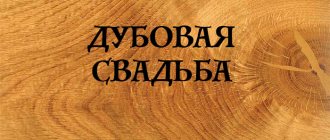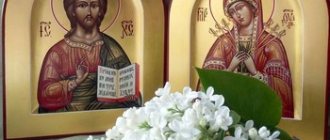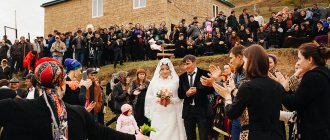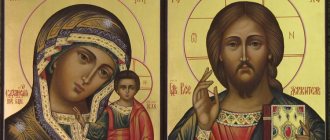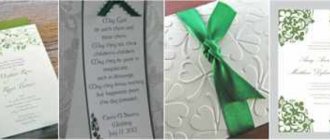The Ingush are an autochthonous people of the Caucasus, whose ancient history dates back to the second millennium BC. The life of the people has been regulated for centuries by the norms of a single moral and ethical code. A set of unwritten rules has made it possible to preserve the unquestioned authority of elders, respect for ancestors, the value of family and honor to this day.
Where they live, number
The Ingush are an autochthonous population of the North Caucasus. Most of the representatives of the nationality continue to occupy places of historical settlement: Ingushetia, part of North Ossetia. As a result of the seizure of territories by the Russian authorities in the second half of the 19th century, repressions at the end of the Great Patriotic War, a significant part of the Ingush were evicted to the Ottoman Empire, Central Asia, and Kazakhstan. The redistribution of historical Ingush territories in the forties of the last century between Georgia and the Grozny region is still the cause of conflicts among the Chechen, Ingush, and Ossetian peoples.
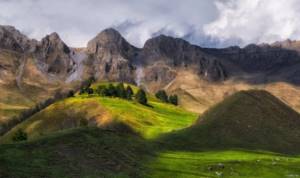
The total number of Ingush in the world, according to 2012 data, is about 700,000 people. Division of the people by state:
- Russia - 444,833 people.
- Türkiye - 85,000 people.
- Syria - 35,000 people.
- Jordan - 25,000 people.
- Lebanon - 20,000 people.
- Kazakhstan - 15,000 people.
In Russia, the largest number of Ingush live in the Republic of Ingushetia - 385,537 people. A significant part - 28,336 people - continues to occupy historical settlement zones, now belonging to the Prigorodny region of North Ossetia. From 1000 to 5000 Ingush live in the Republics of Chechnya and Kabardino-Balkaria, Moscow, Stavropol Territory, Tyumen and Rostov regions.
Summary on the topic: "Traditions and customs of the Ingush"
TRADITIONS AND CUSTOMS OF THE INGUSH
The Ingush are a Vainakh people historically living in the North Caucasus.
Architecture
The Ingush as an ethnic group are mentally inextricably linked with their tower culture. This fact is best emphasized by the self-name of the Ingush - “GIalgIay”, which translates as “inhabitants of the towers”.
Ingush towers were built between the 10th and 17th centuries AD. There are three main types of towers: residential, semi-combat and combat. Also, objects of ancient Ingush stone architecture include religious buildings and burial grounds located within the perimeter of tower complexes.
Among the tower buildings, the stones on which petroglyphs are carved attract the eye. They are located along the walls of the building without any visible system or symmetry. It is believed that for many centuries the tower complexes developed among the mountaineers an aesthetic sense of beauty, a sense of caring for the house as a family sanctuary. Towers played such an important role in the life of the Ingush that, wanting to humiliate a person, they said about him that “he has neither a tower nor a crypt.”
Culture
The basis of the culture of the Ingush people is Ezdel - a set of unwritten moral and ethical rules of behavior for the Ingush, which covers all spheres of life of any member of society, starting from childhood. Ezdel is a Code of Honor and Conduct passed down from generation to generation by parents and society.
Ingush culture is very diverse and has many legends, epics, stories, proverbs and sayings. Rich musical, dancing and singing traditions.
The Ingush are proud of their ancient, amazingly beautiful country, wonderful traditions and customs left by their wise ancestors. They have an unshakable spirit of good neighborliness and true Caucasian longevity. Traditions and customs of the people play an important role in the reproduction of culture and spiritual life, in ensuring the continuity of spiritual life, in the harmonious development of society and the individual.
Kindness, openness, warmth, respect for one’s own dignity and the dignity of others are the basic spiritual principles of the Ingush national culture.
Respect for parents and elders, caring attitude towards younger ones, respectful treatment of women, tolerance towards different cultures, goodwill in relationships with neighbors - all these are manifestations of the age-old traditions of the people. The etiquette of the Ingush relationships with each other and with representatives of other nations is a clear confirmation of this.
Respect for parents and care for them, respect for the elderly is a sacred duty. On weekdays and on holidays, a house in which there are old people is filled with guests. Their grandchildren reach out to old people with special love. Back in the first half of the 19th century, V. Buryanov Fr. The Ingush do not resolve the most significant issues in the life of their family and society without their direct participation.
Caucasians, who by nature have a philosophical approach to life, highly value the role of women in society. In Ingush society, a sense of high respect for women is instilled from an early age. In the distant past, even the most brutal fight was stopped if the woman, asking for it, took off her headscarf. Since ancient times, a woman has been called the “keeper of the hearth.” She must set an example of morality, love and loyalty, tolerance and peacemaking, and in educating the child’s soul and mind, develop it in the right direction. Her role has always been valued in Ingush society. Ingush etiquette requires treating a woman with all attention and consideration. A sense of inner freedom and intelligence, practical wisdom and tact raise a woman’s authority in society.
For the Ingush, a guest is a sacred person. All the best in the house is served to the guest. Regardless of nationality and religion, the guest is given special attention. Society values such customs as vezharil (twinning) and dottagIal (friendship) with representatives of both one’s own and other peoples. Friendly relationships are passed down through generations.
Loyalty to this word is revered as the highest value. A unique event in the spiritual culture of the Ingush is “lovzar”. “Lovzar” is a comic matchmaking, fiery dances, humor, jokes, songs. This is a hymn to the life-affirming beginning of the Ingush. The set of unwritten rules of Ingush ethics “GialgIay ezdel”, according to which the Ingush people build their world, is a way of life and a way of thinking, an attitude and morality, a strict adherence to traditions, nobility, obligatory, like a religion. Ezdel is a culture of intelligence. The Ingush moral code “eh-ezdel”, traditions and customs, the art of stone architecture are the best things created by the Ingush folk genius. It rightfully takes its place in society as a treasury of material and spiritual values of its world. A society that can appreciate the wise heritage of its ancestors is manifested in nobility, attention and respectful attitude towards each other.
Ingush cuisine
Ingush cuisine is one of the oldest and simplest. The dishes are nutritious and high in calories. Prepared quickly from the most available products. Meat - lamb and poultry in their natural form, the main product in cooking. They are prepared from several components, are high in calories and are very easily absorbed by the body. The most important components of many dishes are hot seasonings, onions, garlic, pepper, and thyme.
Ingush cuisine is rich, nourishing and satisfying. Greens are a very important component of dishes. Quite a lot of dishes are prepared from wild garlic, cheese, pumpkin, cottage cheese, corn and, of course, dried meat. Ingush people love meat broths, lamb, beef, and boiled poultry (pork is excluded). The meat is served with dumplings made from wheat or corn flour and always with garlic seasoning. At a time when there were no refrigerators, dried meat was a lifesaver. Many dishes were prepared from it.
The basis of Ingush cuisine is also flour products with various fillings from cottage cheese, pumpkin, potatoes, wild garlic and nettles. Many dishes are prepared from them. The mountaineers, defending their independence, always had to fight. In this regard, dried meat (which did not spoil at all, and could be eaten in any form) and siskal (flatbread or churek made from corn flour) could always be with oneself and were tasty, satisfying food. All winter and early spring I had wild garlic on hand, and in the summer - nettle.
Despite the numerous dishes made from meat, wild garlic and nettles, Ingush cuisine is fundamentally soft, moderate, and can even be considered dietary. Spices do not predominate in it. And yet, it is very diverse.
Costume
As a headdress, the Ingush wore a hat (eltar-kiy) in winter and a hat (mangal-kiy) in summer. Shoes were made of rawhide and morocco, which confirmed the spread of leather crafts among the Ingush. In addition to shoes, leather was used to make pouches, belts, covers, saddles, harnesses, etc. The development of weaving is evidenced by spindle whorls found as a result of archaeological excavations. Among homemade fabrics, cloth occupied first place.
Ingush women used various decorations. They wore copper, bronze and silver temple rings, as well as carnelian and glass beads. The production of temple rings was apparently mastered by Ingush craftsmen.
Crafts
The Ingush have developed such crafts as weapons, pottery, blacksmithing, and jewelry, which in general, based on the available materials, are characterized by a fairly high level of professionalism. Metalworking has been widely developed among the Ingush since ancient times. Local artisans skillfully combined various metal processing operations: graining, blackening, gilding, and inlaying with multi-colored inserts. The ancestors of the Ingush were also skilled gunsmiths. The weapons of the medieval Ingush warrior included: bow, arrows, darts, spears, axes, slings, swords, and later daggers and sabers. From the 15th century Flintlock firearms are spreading among the Ingush. Armor and chain mail, helmets, shields, elbow pads and combat gloves served as protective weapons. Woodworking played a significant role in the economic life of the Ingush. They knew how to make utensils from wood. Wood carving developed. Craftsmen made carved window frames, doors, and furniture. The production of wheels, saddles, and wheel rims was also developed among the Ingush.
Since ancient times, dishes have been made from stone, wood, clay, copper, bronze and iron. The Ingush developed ceramic production. Various vessels, glasses, jugs and dishes were made from clay using polishing. Since the time of the Koban culture, the bearers of which were the ancestors of the Ingush, the tradition of decorating the handles of vessels with stylized heads or animal figures has been preserved. In the second half of the 19th century. Factory-made glassware and earthenware are already appearing.
Astronomical knowledge played a significant role in life and worldview. They revered the heavenly bodies and watched them. They also had their own calendar; they knew how to determine all four solar cycles. The celebration of the first cycle was timed to coincide with the winter solstice, the second to the spring solstice. The year consisted of 12 months, each of which had its own name.
Each month was divided into four weeks of seven days. Calendar cycles were closely related to agriculture and cattle breeding and were based on the extensive practical experience of the people, astronomical observations and mathematical calculations. The main dates of the traditional calendar were celebrated with rituals and holidays. Calendar holidays, essentially labor holidays, dedicated to household work, could be divided into winter, spring, summer-autumn. These were: the holidays of the spring equinox, the god Sela, the celebration of the winter solstice, the new year, holidays associated with the beginning of the harvest, haymaking.
Historical events of the past, ideas about the world around us, echoes of ancient religions, knowledge that existed but was forgotten, were preserved in the memory of the people in the form of traditions, legends, myths, fairy tales, heroic and lyrical songs. The works of oral folk art trace the worldview, worldview, moral and ethical ideals of the people, various aspects of their life and way of life, ideas about good and evil, nobility and justice, and give a popular assessment of many events and human actions. The folklore of the Ingush, along with its pronounced originality, has much in common with the oral folk art of other peoples.
Housing

The ethnonym “Galgai” arose from the traditional type of dwellings and defensive structures of the Ingush - stone towers. They formed mountain settlements located in the depths of gorges on the slopes. Combat towers reached a height of 16 m, residential towers were erected to a height of 2-3 floors. There were semi-combat structures up to 10 m high: the first floors were occupied by living quarters, at the top there were loopholes and platforms for defense in the event of an enemy attack. The towers were built from stones - a natural material that was available in abundance in the mountainous areas. The walls were decorated with petroglyphs, solar, spiral, anthropomorphic, and animal images. The signs carried a sacred meaning, addressed pagan Ingush deities, and had protective functions. On the front wall, the chief builder of the battle tower or the elder of the clan left a palm print. It was believed that it gives protection from enemies and evil spirits. More than 100 tower villages have been preserved on the territory of Ingushetia; the total number of buildings from the 13th–19th centuries is about one and a half thousand. The designs of buildings and the durability of buildings speak of the high skill of builders and architects. There was a tradition: the construction of a new tower was required to be completed in a year, otherwise it was believed that the family was weakening and dying out. The height of the structure, general condition, and number of rooms were used to assess the well-being and reliability of the family. There was a proverb: “Tell me what kind of tower your family has, I will answer whether you are worthy of my daughter!”
Despite the time of year, it is always colorful and atmospheric here, and people are especially happy
One can talk endlessly about Magas, the city of the Sun.
Since childhood, I moved from one city to another. It was never as comfortable as it was here anywhere.
Despite the time of year, it is always colorful and atmospheric here, and people are especially happy.
There are no ugly places in Magas. The Tower of Concord and the Alan Gate are not inferior in beauty to either the Eiffel Tower or the Statue of Liberty.

The Republic of Ingushetia is small, but has already seen a lot
. Living here has many advantages, such as low taxes and affordable housing. And most importantly, we do not have nursing homes or nightclubs.
About culture and mentality
The Ingush mentality is amazing.
Our ancestors were wise and strong in spirit, thanks to them everything that we call “Ezdel” was preserved. Translated into Russian, the word means “Do, weighing” - before doing something, make sure that there is more good than evil in your deeds. Our mentality is what makes us proud to call ourselves Ingush.
The Ingush are one of the most ancient peoples of the North Caucasus
. Its culture is rich, original, diverse and interesting. One of the oldest temples in the Russian Federation is located on the territory of Ingushetia, in the mountainous part of the Dzheirakh region, where numerous family towers and crypts were also erected. In the spiritual culture of the Ingush, the first place is occupied by religion - Islam.
Traditions
Not only life, but also death of a person was associated with stone buildings. Another proverb says: “A living man needs a tower, and a dead man needs a crypt.” Each clan had a family crypt located near the home. The Ingush saw in this a philosophy of contemplation, reflection on the moral standards of the living. Looking at the buildings where relatives found eternal peace, it was supposed to think about the eternal, to improve the soul during life.
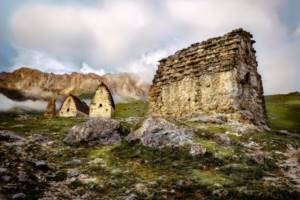
The crypts were built in the form of spacious rooms, reminiscent of residential towers with sloping roofs. The remains of the dead were placed here after death. The second option is small structures resembling dolmens, equipped with slits for the penetration of light and air. This design is not accidental: since the times of the Alan culture, there has been a custom according to which a dying person himself or with the help of loved ones moved to the crypt before death. Before the advent of Islam in the 19th century, in mountainous regions, old people considered it an honor to be able to reach their eternal refuge in time. Leaving the crypt was considered the greatest disgrace; it was forbidden to bring food inside. It happened that relatives visited the dying person for several days after moving to the crypt. With the widespread spread of Islam, this method of burial became a thing of the past: the dead began to be buried according to Muslim rites. The body was washed, dressed in light clothes, wrapped in a carpet and taken out into the courtyard, where those who wished to do so held a farewell ceremony. The procession moved to the family cemetery, where after prayers the body was interred. Women were not allowed in the cemetery: their task was to prepare a rich funeral dinner. As with weddings, all members of huge Ingush families, friends, and neighbors gathered for the final farewell, which took up to three days.
Wedding traditions
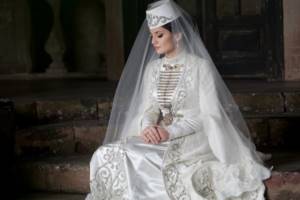
The marriageable age for men was 17-20 years, for girls - at 15-17 years. The bride was carefully chosen by the groom's parents, assessing the family as a whole, paying special attention to the female half. Wedding rituals began with matchmaking, in which the parents and relatives of the husband participated. To obtain consent, it was necessary to come to the chosen girl’s house at least three times. This did not guarantee a positive answer: people were not forced into marriage. On the wedding day, a wedding train arrived for the bride without the groom. After a comic ransom and a farewell ceremony with her parents, the girl was taken to her mother-in-law’s house. The older woman greeted her with honey and butter, which symbolized the wish for a sweet, well-fed life. Weddings were noisy and crowded: at least 200-500 people, sometimes the number of guests reached a thousand. Not inviting someone from your family or friends was considered an insult, as was ignoring an invitation. The celebrations lasted up to ten days. During the feast, the girl was taken to a separate room, where she remained throughout the wedding. According to another tradition, the daughter-in-law stood during the wedding feast in the corner of the hall, accepting gifts. The groom was at a friend’s house, came to the bride on the third day, then the avoidance continued for up to a month. The wedding ceremonies ended with the girl being taken to the spring for water, during which she met the residents of the village.
About help and family traditions of the Ingush
In my opinion, one of the most wonderful traditions of the Ingush is “belkhi”. This custom is associated with mutual labor assistance and support for each other. In the old days, in order to mow grass on a steep slope, the Ingush tied each other with a rope, which prevented the workers from falling.
If the breadwinner dies in a family, neighbors and relatives support the victims. The same thing happens after a disaster, such as a fire. In difficult moments of history, it was the tradition of “belkhi” that helped the people to resist and survive, without losing their identity and remaining no less united than before.
The Ingush have a pronounced cult of veneration of ancestors and elder members of the family. If there are several sons in the house, then after marriage the eldest must build their own home, but the youngest remains with his parents, taking care of them together with his wife.
The head of the family is clearly the man, and the woman is assigned a secondary role, but this does not mean that she does not have the right to express an opinion or participate in the life of relatives. The mother is a sacred person for the Ingush; she stands on a par with the father. Today, many Ingush traditions are influenced by Islam, but this religion was not always dominant in Ingushetia.
Less than ten centuries ago, the Ingush adhered to pagan beliefs, worshiped the deities of rain and thunder, patrons of fertility and spirits of the earth. With the advent of Islam, the ancient faith did not disappear, but was only slightly transformed, which is why modern Ingush Muslims differ significantly from supporters of this religion in other countries.
Appearance
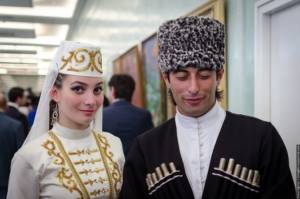
The Ingush belong to the Caucasian anthropological type of the Caucasian race. According to researchers, it was this people who managed to preserve the largest number of authentic appearance features. These include:
- high growth;
- thin build;
- coarse, straight hair of dark shades;
- gray, brown, horizontal eyes;
- low protruding chin;
- the hairline is developed.
From childhood, Ingush boys were taught heavy physical activity, sports, horse riding, and handling weapons, which made them physically strong. Moderation in food was regulated by rules of conduct. Men were required to have a toned figure until old age; it was a shame to have excess weight, especially in the abdominal area. There was a special test for slimness: lying on your side on a flat surface, there must be a gap in the waist area through which the cat can get through. Female beauty was valued, but when choosing a bride, other qualities were decisive: intelligence, courage, modesty, nobility, honor, hard work, and the ability to bear children. It was the latter factor that allowed women, especially those with children or those preparing to become mothers, to have a figure that was far from today’s ideals.
Cloth
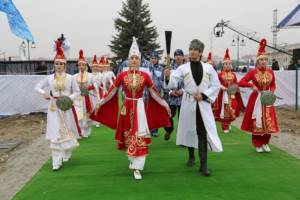
Traditional Ingush clothing is of the general Caucasian type: trousers, undershirt with a high collar with buttons, beshmet. On holidays and special occasions they wore a Circassian coat decorated with gazyrs. For a long time, the Ingush papakha, traditional for the Caucasian peoples, had a conical shape, after which a version with an extended top spread. They complemented the outfit with a belt where a bladed weapon, often a dagger, was attached. A whole series of adats - norms of behavior - are associated with the dagger. It was forbidden to take out the dagger unless necessary, and once taken out, it was forbidden to sheathe it without using it. It was impossible to swing a weapon in jest. In the event of a fight, it was supposed to strike from above: long training was devoted to this until a very old age. The women's costume consisted of a floor-length white canvas shirt, under which they wore trousers. The top of the outfit was complemented by a swing dress, the festive version of which was made from expensive fabrics. The suit was belted with a leather or silver belt. The head was covered with a scarf or a traditional red kurkhars hat, shaped like a skate with a split top.
The Ingush are distinguished by their nobility
Also, the Ingush have a custom that can be called one of the types of competition - these are noble deeds.
A distinctive feature of the Ingush people is respect for the older generation and, of course, for parents. The rules of most young people always include norms of behavior. For example, the obligation to let a senior pass on the road. The eldest always speaks first. You cannot interrupt adults or enter into polemics with them; in addition, you need to hear and listen to the advice of the older generation. Parents should be discreet towards their children. As for fathers, they cannot lift their child in their arms if there is an older person nearby.
Life
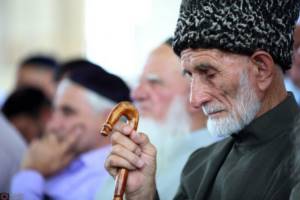
The traditional family form is patriarchal, often small or three-generation. The youngest son remained to live in his father's house. The elders brought their daughters-in-law to their parents' house, but began to build their own home if they had the opportunity. The basis of interpersonal and social relationships was based on respect for elders and respect for ancestors, whom they knew up to the seventh generation. The head of the family was a man who was responsible for financial well-being, security, and defending the honor of his relatives. The woman occupied a dependent position, but never played the role of a servant or slave. Since ancient times, she has been revered as the mother who gives life to all things. There was a saying: “A man deteriorates - the family deteriorates, a woman deteriorates - the whole nation deteriorates.” It was forbidden to touch women even with a finger: to do otherwise meant an insult and led to blood feud. It was forbidden to swear, smoke, or fight in front of them. The persecution of the bloodline stopped in their presence; women and children were not used as victims of blood feud.
Religion
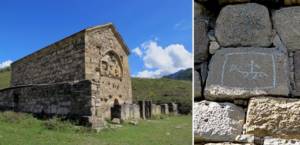
The traditional religions of the Ingush were animism, totemism, and magical beliefs. The wolf, bear, and deer were considered totem animals. There was a complex pantheon of deities, which was inhabited by male and female beings. The god Dyala was supreme, and they were no less revered:
- god of thunder and lightning - Sela;
- mother of water - Khi-nana;
- goddess of fertility - Tusholi;
- mother of the winds - Mihanana
- patron of cattle breeding - Gal-Erda;
- goddess of the highlands - Mehkanana;
- patron of hunters, ruler of wild animals - Elta;
- the mother of the blizzard is Darza-nana;
- god of war - Molds-Erda;
- lord of the underworld - Estr.
In the Middle Ages, Christianity spread significantly in the region, as evidenced by the surviving stone churches and crosses. Islam begins to penetrate the region in the 13th-15th centuries, but it takes root on the plains only in the 17th-18th centuries, in the mountains even later - at the end of the 19th century.

